Abstract
At a given external dose of an inhaled chemical the internal dose or the amount absorbed into the body varies depending on pulmonary ventilation and other physiological factors. Such variability is of concern in the development of biological indices of occupational exposure to organic solvent vapours. This paper discusses how physiological factors may influence the pharmacokinetic behaviour of inhaled organic solvent vapours, especially in relation to monitoring of biological exposure. To illustrate the discussion a computer based physiological pharmacokinetic model was used describing quantitatively the influence of body size, body fat content, and sex on the pharmacokinetic behaviour of trichloroethylene. Absorption, distribution, metabolism and excretion of trichloroethylene were found to vary according to the different anatomical features of men and women. Body build (body weight and body fat content) also affected the pharmacokinetic behaviour of this solvent.
Full text
PDF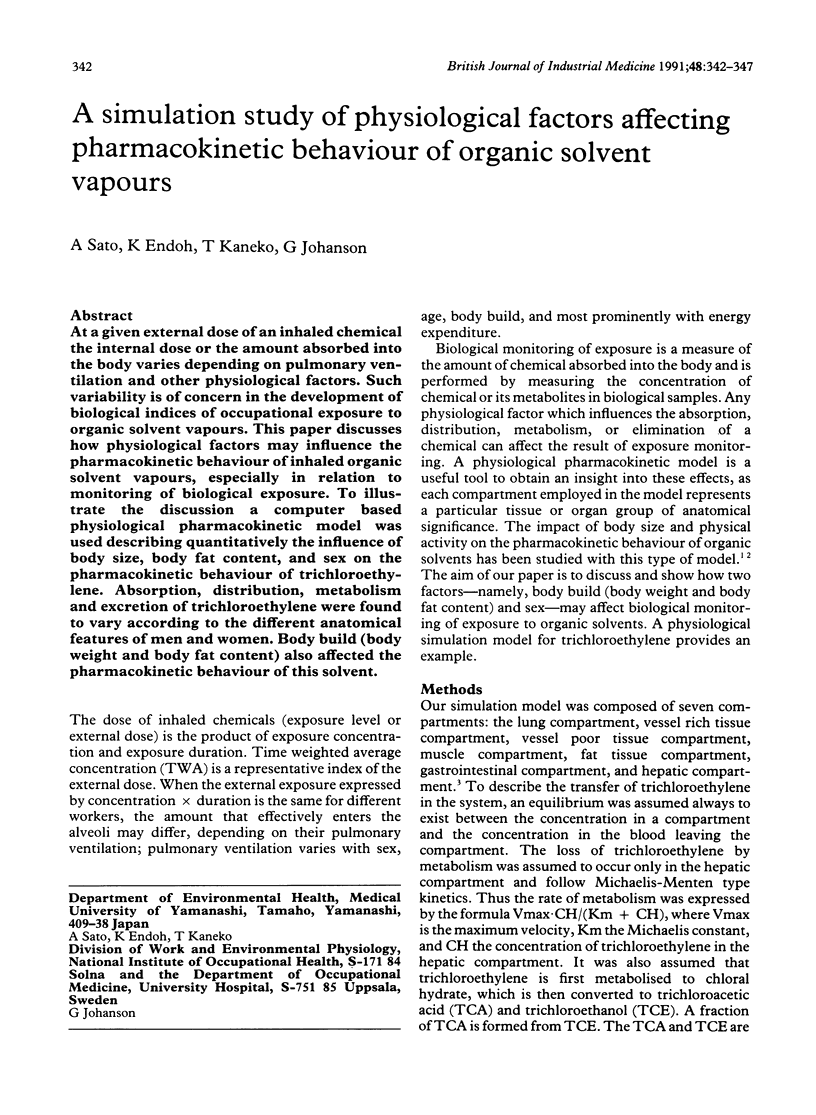
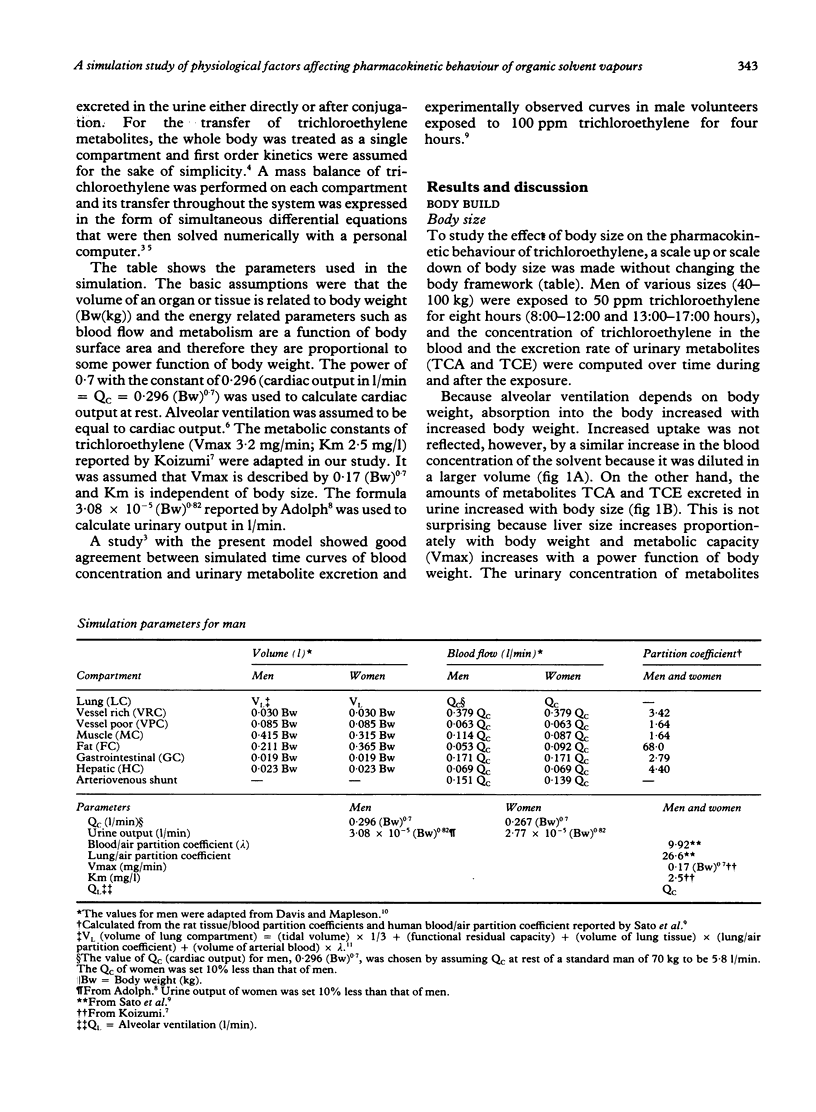
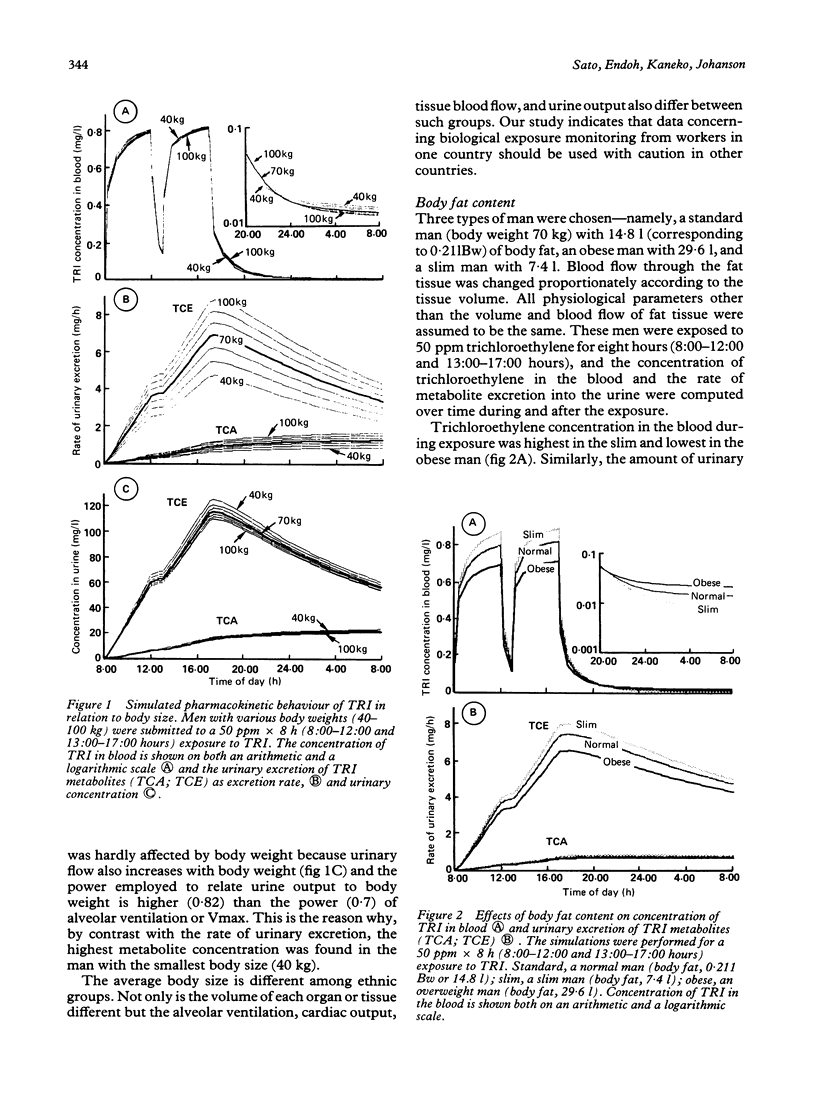
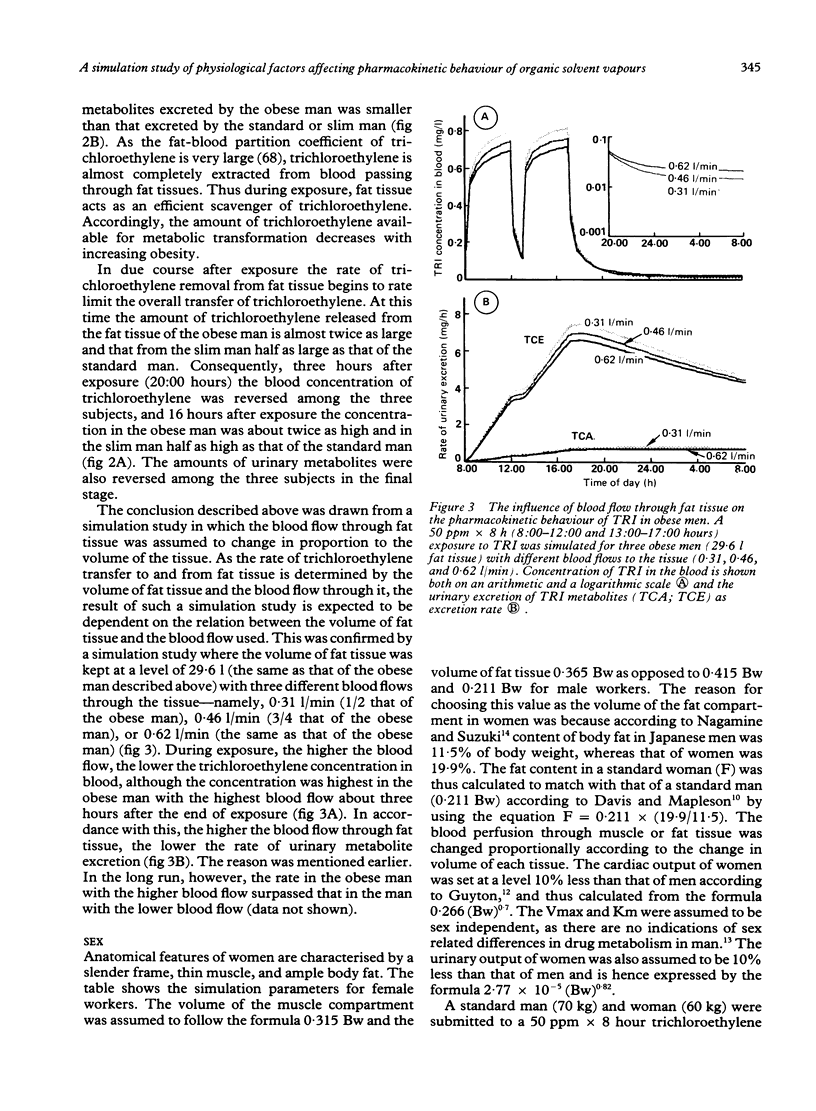

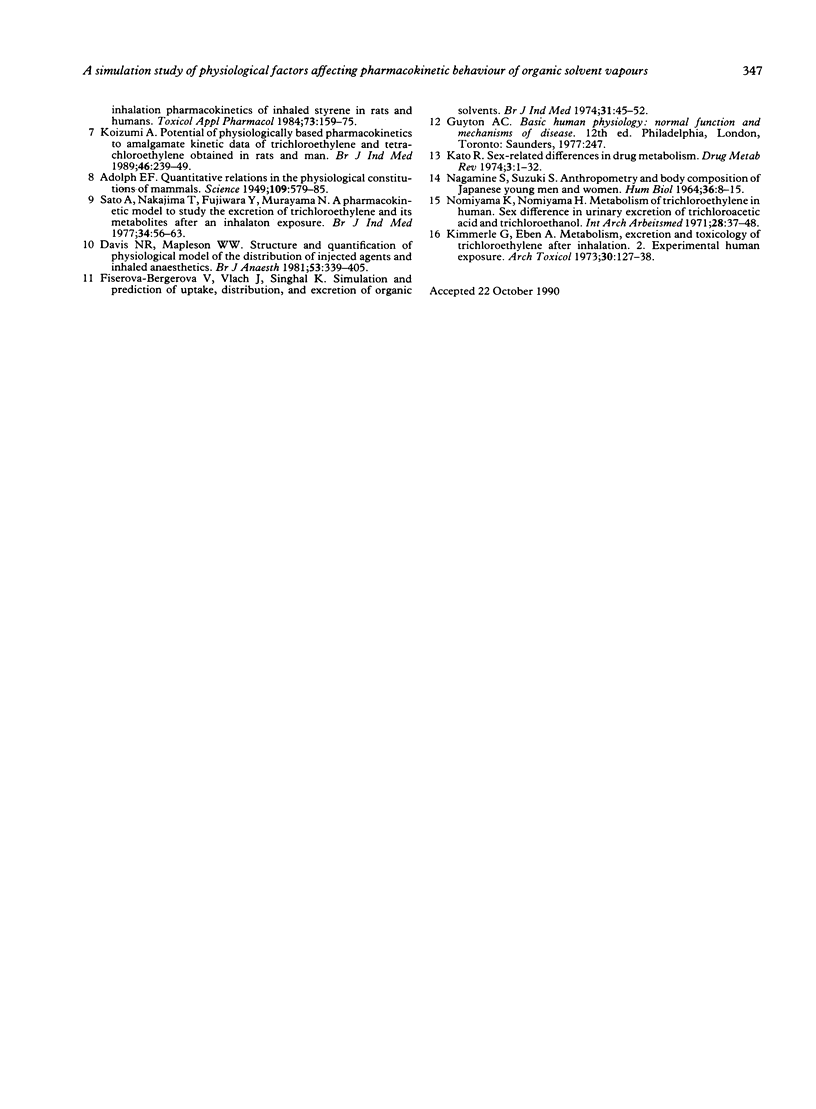
Selected References
These references are in PubMed. This may not be the complete list of references from this article.
- Adolph E. F. Quantitative Relations in the Physiological Constitutions of Mammals. Science. 1949 Jun 10;109(2841):579–585. doi: 10.1126/science.109.2841.579. [DOI] [PubMed] [Google Scholar]
- Davis N. R., Mapleson W. W. Structure and quantification of a physiological model of the distribution of injected agents and inhaled anaesthetics. Br J Anaesth. 1981 Apr;53(4):399–405. doi: 10.1093/bja/53.4.399. [DOI] [PubMed] [Google Scholar]
- Fernández J. G., Droz P. O., Humbert B. E., Caperos J. R. Trichloroethylene exposure. Simulation of uptake, excretion, and metabolism using a mathematical model. Br J Ind Med. 1977 Feb;34(1):43–55. doi: 10.1136/oem.34.1.43. [DOI] [PMC free article] [PubMed] [Google Scholar]
- Fiserova-Bergerova V., Vlach J., Singhal K. Simulation and prediciton of uptake, distribution, and exhalation of organic solvents. Br J Ind Med. 1974 Jan;31(1):45–52. doi: 10.1136/oem.31.1.45. [DOI] [PMC free article] [PubMed] [Google Scholar]
- Guberan E., Fernandez J. Control of industrial exposure to tetrachloroethylene by measuring alveolar concentrations: theoretical approach using a mathematical model. Br J Ind Med. 1974 Apr;31(2):159–167. doi: 10.1136/oem.31.2.159. [DOI] [PMC free article] [PubMed] [Google Scholar]
- Kato R. Sex-related differences in drug metabolism. Drug Metab Rev. 1974;3(1):1–32. doi: 10.3109/03602537408993737. [DOI] [PubMed] [Google Scholar]
- Kimmerle G., Eben A. Metabolism, excretion and toxicology of trichloroethylene after inhalation. 2. Experimental human exposure. Arch Toxikol. 1973;30(2):127–138. doi: 10.1007/BF02425930. [DOI] [PubMed] [Google Scholar]
- Koizumi A. Potential of physiologically based pharmacokinetics to amalgamate kinetic data of trichloroethylene and tetrachloroethylene obtained in rats and man. Br J Ind Med. 1989 Apr;46(4):239–249. doi: 10.1136/oem.46.4.239. [DOI] [PMC free article] [PubMed] [Google Scholar]
- NAGAMINE S., SUZUKI S. ANTHROPOMETRY AND BODY COMPOSITION OF JAPANESE YOUNG MEN AND WOMEN. Hum Biol. 1964 Feb;36:8–15. [PubMed] [Google Scholar]
- Nomiyama K., Nomiyama H. Metabolism of trichloroethylene in human. Sex difference in urinary excretion of trichloroacetic acid and trichloroethanol. Int Arch Arbeitsmed. 1971;28(1):37–48. [PubMed] [Google Scholar]
- Sato A., Nakajima T., Fujiwara Y., Murayama N. A pharmacokinetic model to study the excretion of trichloroethylene and its metabolites after an inhalation exposure. Br J Ind Med. 1977 Feb;34(1):56–63. doi: 10.1136/oem.34.1.56. [DOI] [PMC free article] [PubMed] [Google Scholar]


